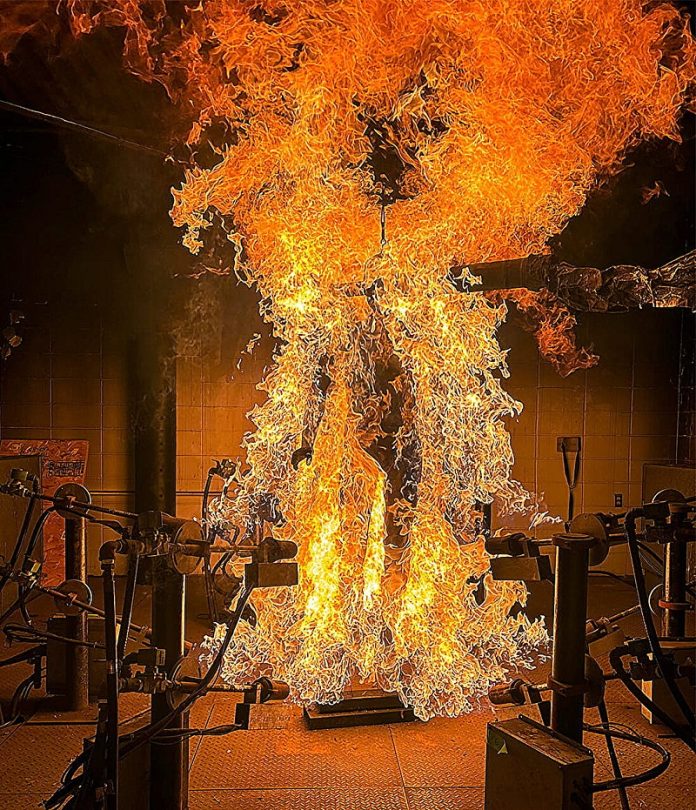
Researchers at the University of Alberta have developed a new protective shirt designed to better meet the needs of wildland firefighters.
This new garment, created by Ph.D. student Elena Kosareva, offers greater protection than the current shirts worn by firefighters battling wildfires.
Kosareva, who is pursuing her doctorate in textile and apparel science, designed the shirt in response to the increasing frequency of wildfires and the need for improved safety gear.
“It’s been a long time since there was an update to the design of firefighter shirts,” Kosareva says, referencing a 24-year-old study that highlighted areas of the body needing more protection.
With wildfires becoming more common, providing better protective clothing for firefighters is more important than ever.
Currently, firefighters wear a thin cotton undershirt beneath a flame-resistant outer shirt.
However, because it’s difficult to keep an even air gap between the body and the clothing, certain areas—like the shoulders, torso, and wrists—are left in direct contact with the fabric, making them more vulnerable to burns.
“Air is a great insulator against heat,” Kosareva explains. “By creating an air gap between the body and the outer garment, we can provide better protection from high temperatures.”
Kosareva’s new shirt, which is being patented, uses a special three-dimensional “spacer” fabric made of flame-resistant fibers in key areas like the yoke and sleeves.
This fabric contains thicker, compression-resistant yarn that traps air between the layers, creating an artificial gap between the skin and the fabric. This helps prevent burns in the most vulnerable areas of the body.
Despite its increased protection, the new shirt remains lightweight, flexible, and breathable, essential qualities for firefighters who perform physically demanding tasks like cutting down trees, digging firebreaks, and hiking long distances while carrying heavy gear. Wildland firefighters can’t wear the heavier suits used by structural firefighters, so maintaining breathability and flexibility is crucial.
Tests showed that Kosareva’s shirt provides three times more protection against heat than the standard shirts currently used. The new fabric withstood open flames for 14 seconds before causing second-degree burns, compared to just five seconds with the standard shirt. The shirt also reduced the total burn area on the body by 6% in manikin tests, offering better protection even in worst-case fire situations.
Kosareva’s next step is to improve the design for greater comfort and ease of movement, especially around the shoulders. The fabric’s ability to resist compression could also provide cushioning for firefighters carrying backpacks for long periods.
With plans for human wear trials in the future, Kosareva hopes the new shirt will eventually be manufactured for widespread use, offering firefighters better protection and comfort.
“This is a production-ready prototype,” says Jane Batcheller, Kosareva’s research supervisor. “Manufacturers could adopt this design with very few changes needed.”



